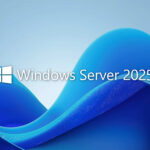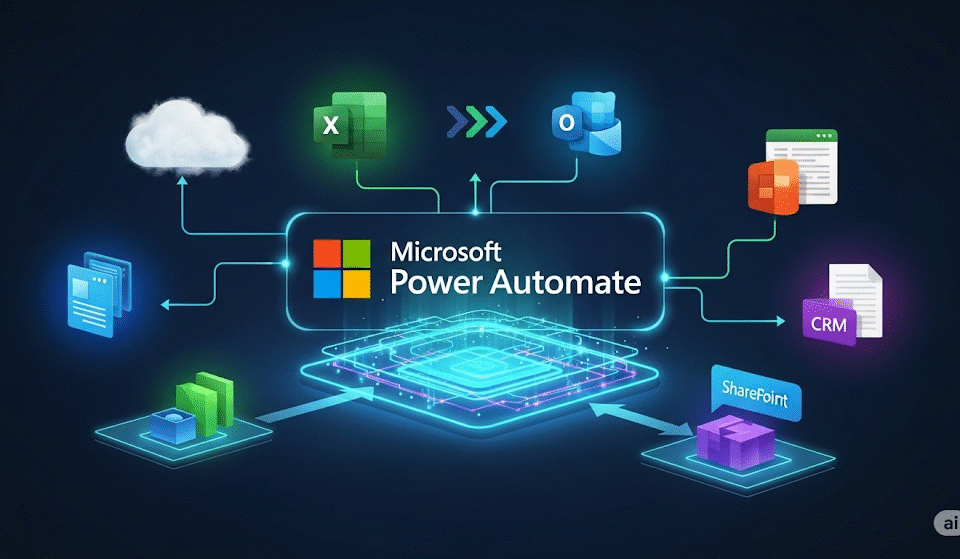
End of support for Windows 10
14. October 2024
Introduction to Windows Server 2025: Why an upgrade makes sense – but it’s better to wait a little longer
25. November 2024As IT service providers, we see it time and again: the IT budgets of many companies are often kept small because some decision-makers believe: “If it doesn’t work, we’ll just work with pen and paper.” This idea sounds nostalgic and perhaps even charming, but in the modern business world it is simply unrealistic. Today, technology is omnipresent and indispensable. The “pen and paper” argument may serve as a makeshift solution, but in practice it quickly reaches its limits as soon as complex data processing, customer information or real-time access to systems is required.
Instead, it’s worth looking at technology as a strategic competitive advantage. A robust IT infrastructure can mean the difference between smoothly functioning operations and costly downtime.
IT as a competitive advantage: the key for future-oriented companies
Yes, there are projects that fail and technologies that turn out to be missteps. But the right IT infrastructure can offer enormous advantages. Automation, process optimization and digital efficiency are just some of the aspects that make companies more competitive. Those who get to grips with innovations at an early stage and future-proof their infrastructure will give themselves a significant head start. The alternative? Standing still and potentially losing competitiveness.
Even smaller investments in digitalization can streamline processes, improve communication and enable a faster response to market changes. Today, IT investments are no longer just “nice to have” – they are a key prerequisite for the long-term success of a company.
Speaking of artificial intelligence: we are on the threshold of a new era that will bring changes that are almost impossible to predict. Companies that ignore the potential of AI not only risk being left behind, but also falling behind their competitors. AI applications will offer decisive efficiency benefits in many areas and can transform the entire business. Now is the time to get to grips with AI and other future technologies and prepare your own IT for the next step.
A new risk: ransomware and the threat of 2024
The importance of solid IT security is particularly evident this year: 2024 was characterized by terrifying cyberattacks that caused massive damage to companies. The threat posed by ransomware has changed. Attackers used to aim to encrypt their victims’ data and demand a ransom to release it. However, the approach has now changed: Instead of encrypting the data locally, cyber criminals now often steal the most sensitive information and threaten to publish it on the darknet.
This method puts significantly more pressure on the affected companies, as the potential damage is no longer just the loss of access to data, but also the potential loss of trust towards customers, business partners and the public. This also shows that without a well thought-out and secure IT infrastructure, companies are under massive pressure and are usually poorly positioned in the event of a crisis.
IT is the basis today – for everything
Digitalization has fundamentally changed the world of work in recent years. Not only communication, but also data processing, project management, marketing and even production are now dependent on IT systems. Where paper and pen used to have a certain backup function, this is simply no longer possible today. Anyone who still believes in “pen and paper” is shutting themselves off from reality – and will inevitably have to face up to technological change.
A modern company can only function with a solid digital infrastructure. Access to data, the availability of information and ensuring that everything runs smoothly are the key drivers of any business model today.
Outdated devices: the hidden cost trap
One point that is often neglected is keeping hardware up to date. Unlike cell phones, which nowadays are often replaced every two years, many companies tend to keep IT devices such as laptops and desktops in use for longer. Of course, it is not necessary to constantly purchase the latest hardware, but older devices often slow down productivity. A modern computer with the latest technology allows you to work noticeably faster.
If an employee saves 15 minutes a day thanks to an up-to-date computer, that’s already 5 hours of time saved over 20 working days a month. Extrapolated over a year, that’s 60 hours per employee – the equivalent of almost 8 full working days. In a team of 10 employees, these savings add up to 600 hours per year, with 20 employees even to 1,200 hours. These figures clearly show that regular hardware updates not only increase productivity, but also lead to more efficient use of working time.
Data loss as a financial burden
To illustrate the topic of data security, let’s imagine the following scenario: A company decides against implementing a comprehensive backup system in order to save costs in the short term. One day, a hard disk breaks and important customer data is suddenly no longer accessible. The team spends countless hours reconstructing the data and minimizing the damage – at best! In the worst case, the data is irretrievably lost. These hours of recovery not only cost valuable working time, but can also damage customer confidence and lead to a loss of sales in the worst case. Investments in security and backup solutions could prevent such scenarios and therefore offer a clear increase in value.
Efficiency gains through automation and AI
Let’s look at the example of automation: let’s assume that your IT infrastructure makes it possible to automate routine tasks such as monthly reports or customer inquiries. If an employee saves one hour a week through this automation, that’s 52 hours per year per employee. In a team of 10 people, these savings add up to over 500 hours per year. Time that can be productively invested in other, value-adding tasks.
The situation is similar with the integration of artificial intelligence (AI). Companies that rely on AI at an early stage will achieve significant competitive advantages in the future. Processes such as data analysis, customer communication and project management can be revolutionized by AI and enable faster and more efficient decision-making. Companies that do not keep pace here risk being left behind.
Conclusion: IT infrastructure at the heart of every company
All of this shows that IT is far more than a technical necessity – it is at the heart of modern companies. Without functioning IT, employees cannot work efficiently, customers cannot be supported and data cannot be secured. The IT infrastructure forms the foundation for communication, productivity and security. And it’s not just about functionality, but also about security, which is particularly crucial in a business environment.
In the private sphere, it may be easier to do without security or take risks. But for companies with employees, customers and possibly also investors, IT security is an obligation. A well thought-out IT infrastructure reduces risks, protects sensitive data and strengthens the trust that customers and partners place in the company. IT is not just a cost center – it is one of the best investments a company can make to remain successful in the future.
Conclusion: Invest in your company’s IT infrastructure to remain stable, secure and competitive in the long term. We at Leftclick AG are at your side and help you to get the best out of your IT – so that you are optimally prepared for the challenges and opportunities that the future brings.



